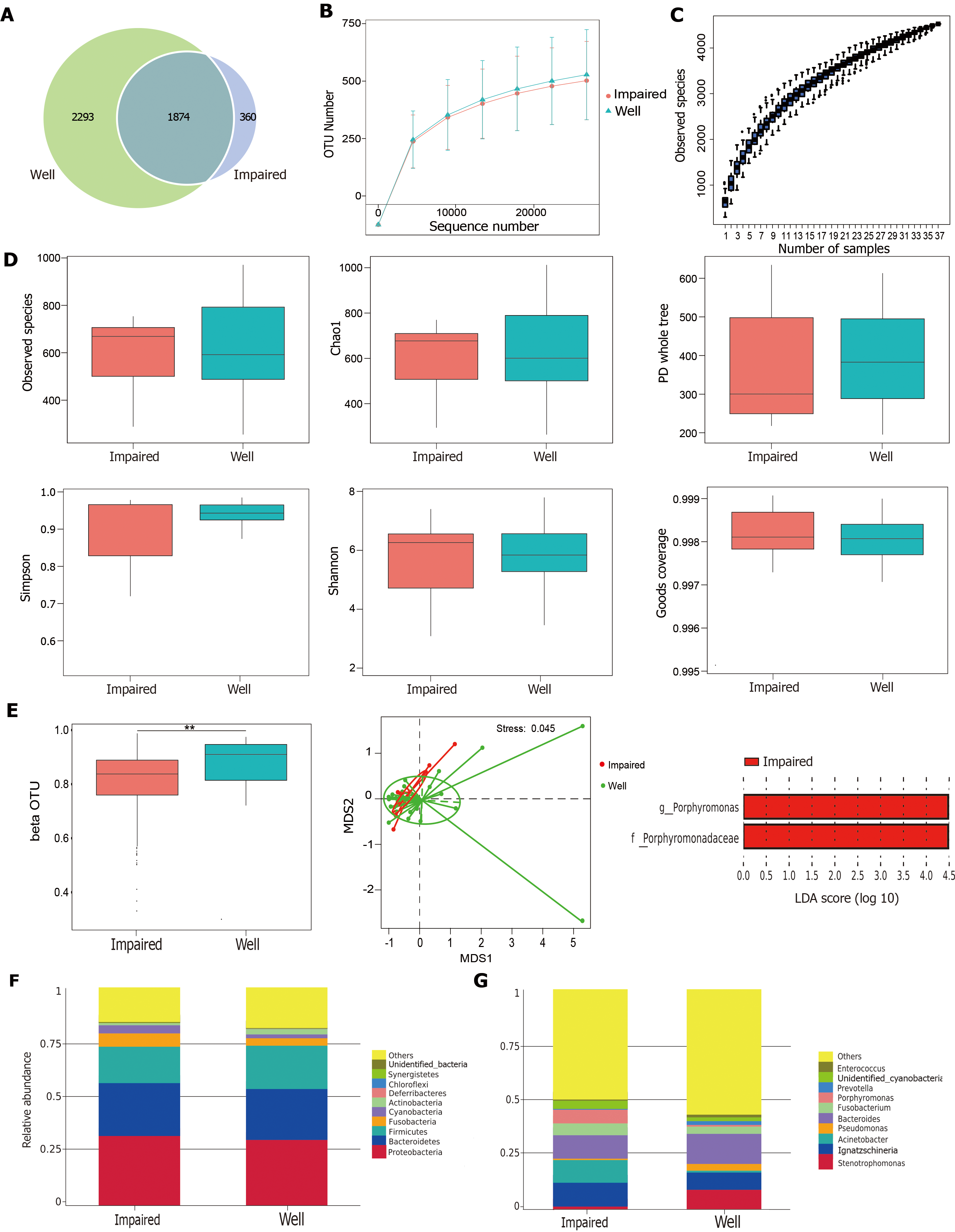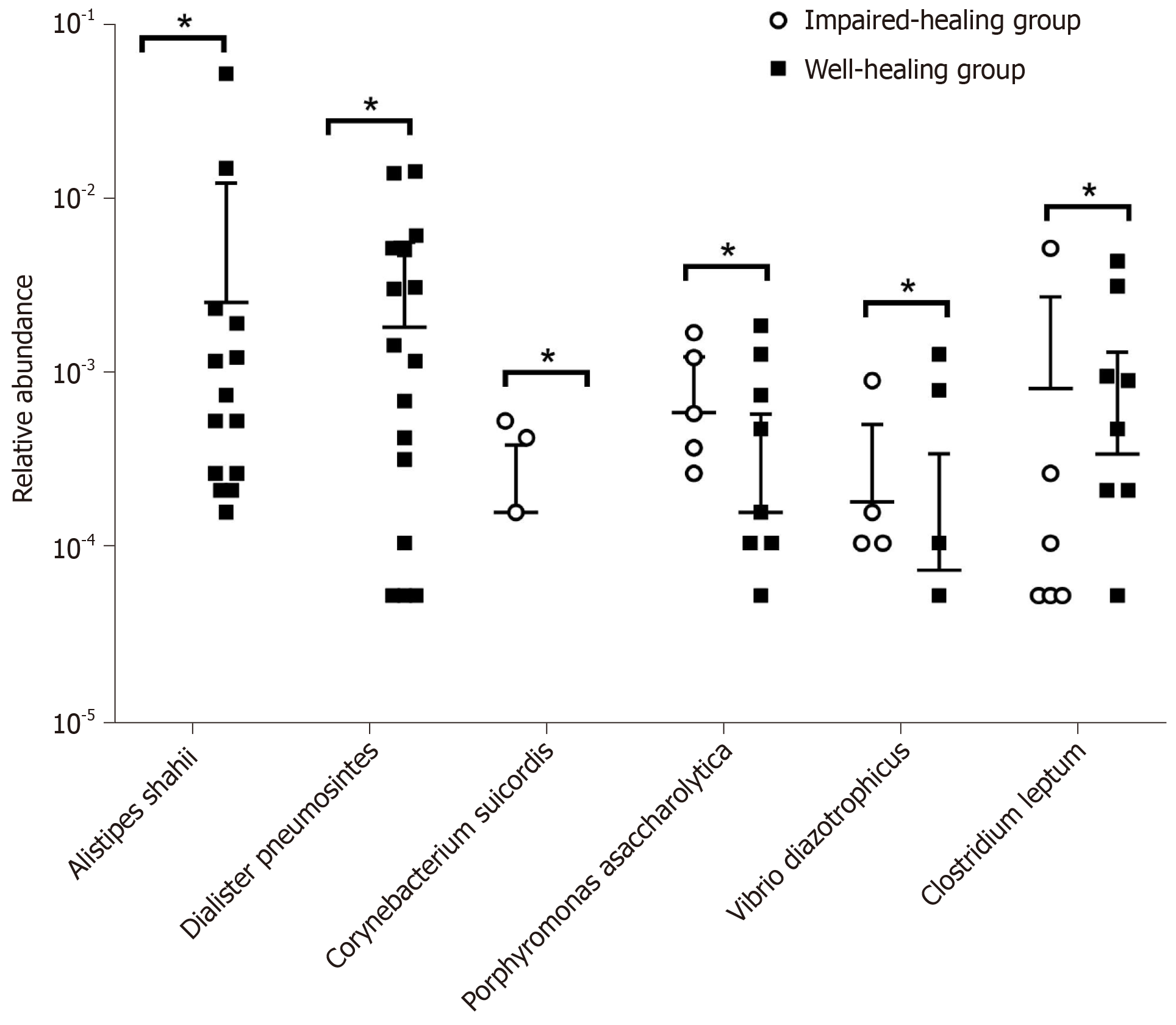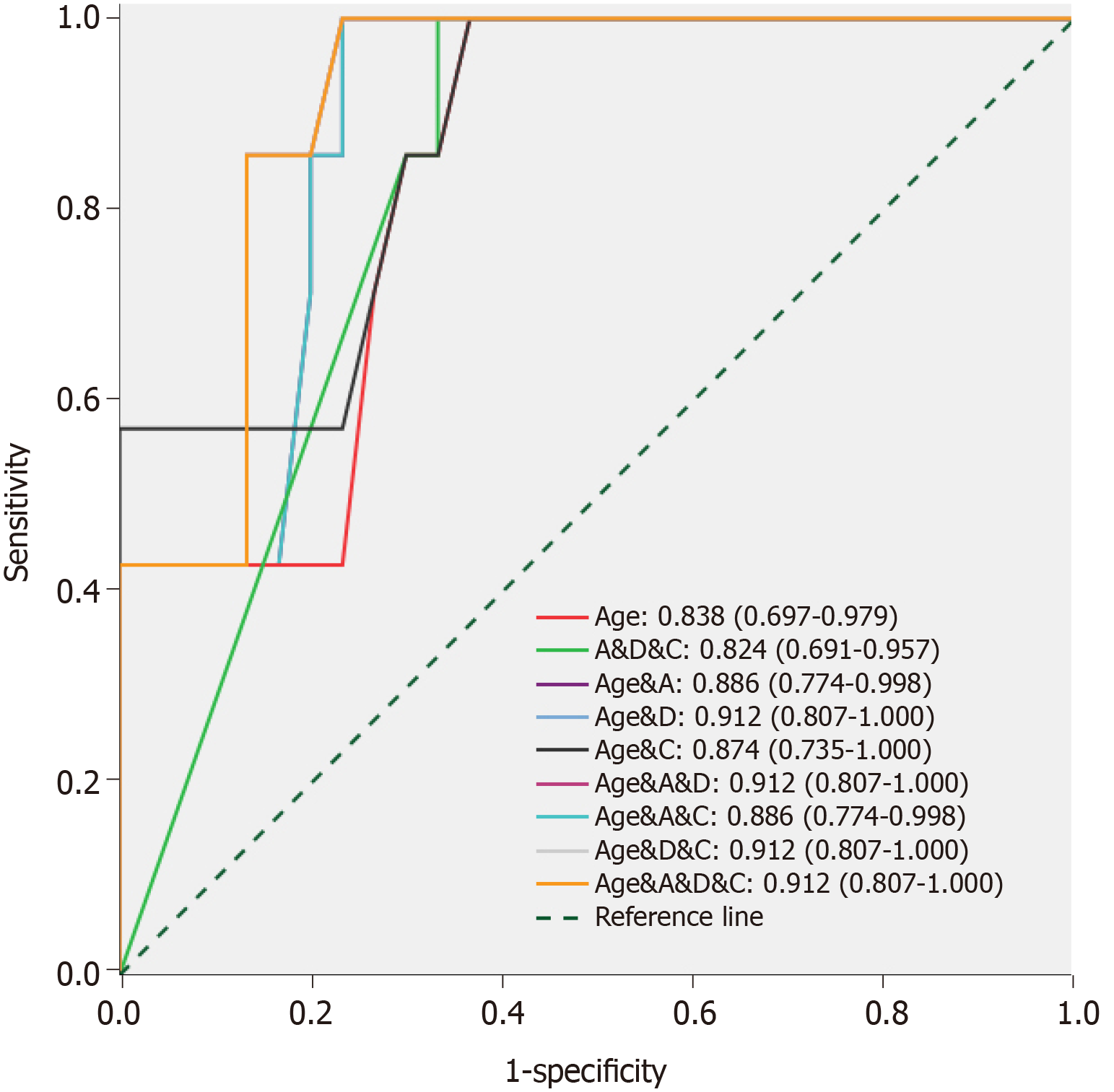Copyright
©The Author(s) 2019.
World J Gastrointest Oncol. Sep 15, 2019; 11(9): 717-728
Published online Sep 15, 2019. doi: 10.4251/wjgo.v11.i9.717
Published online Sep 15, 2019. doi: 10.4251/wjgo.v11.i9.717
Figure 1 Structural change of the intestinal microbiota between impaired-healing group (n = 7) and well-healing group (n = 30).
A: Venn diagram illustrating the total, unique, and shared numbers of OTUs predicted for impaired-healing group and well-healing group datasets; B: Rarefaction curve of OUT; C: Species accumulation boxplot; D: Alpha diversity analysis using observed species index, Shannon index, Simpson index, Chao1 index, Goods coverage index, and PD whole tree index; E: Beta diversity was significantly different between two groups by Wilcoxon test, bP < 0.01; non-metric multi-dimensional scaling scores plot of weighted UniFrac distance matrix based on the relative abundance of OTU. Each symbol represents a sample. Colors represent different groups, stress = 0.045 < 0.2; LDA effect size (LEfSe) showed significant differences in Porphyromonas genus and Porphyromonadaceae family between two groups; F: Top-ten dominant phyla of two groups; G: Top-ten dominant genera of two groups.
Figure 2 Correlation of intestinal microbiota with anastomotic healing.
Relative abundance of six species (Alistipes shahii, Dialister pneumosintes, Corynebacterium suicordis, Porphyromonas asaccharolytica, Vibrio diazotrophicus, and Clostridium leptum) was significantly changed between the impaired-healing group and well-healing group. The significance was assessed by Wilcoxon test, aP < 0.05.
Figure 3 Microbial factors combined with clinical factor improve accuracy of predictive models for anastomotic healing.
Receiver operator characteristic (ROC) curves for clinical factor (age) alone, microbial factors (Alistipes shahii, Dialister pneumosintes, and Corynebacterium suicordis) alone, and clinical factor with microbial factors. The value means the AUC (the area under the ROC curve) and 95%CI; A: Alistipes shahii; D: Dialister pneumosintes; C: Corynebacterium suicordis.
- Citation: Li YD, He KX, Zhu WF. Correlation between invasive microbiota in margin-surrounding mucosa and anastomotic healing in patients with colorectal cancer. World J Gastrointest Oncol 2019; 11(9): 717-728
- URL: https://www.wjgnet.com/1948-5204/full/v11/i9/717.htm
- DOI: https://dx.doi.org/10.4251/wjgo.v11.i9.717











